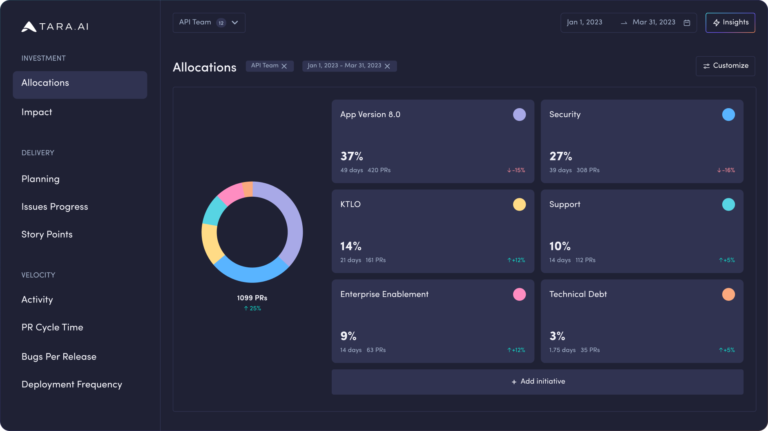
In today’s data-driven world, understanding and effectively analyzing vast amounts of information has become crucial for businesses and individuals alike. Fortunately, with the advent of Artificial Intelligence (AI), the task of analyzing data has become easier and more efficient than ever before. By harnessing the power of AI, you can uncover valuable insights, identify patterns, and make informed decisions that can drive your success. In this article, we will explore the basics of using AI to analyze data, providing you with practical tips and strategies to unleash the full potential of this revolutionary technology. So, get ready to unlock the secrets hidden within your data and revolutionize your decision-making process with AI.

Understanding AI
Artificial Intelligence (AI) refers to the development of computer systems that can perform tasks that usually require human intelligence. These tasks may include speech recognition, decision-making, problem-solving, and learning. The goal of AI is to create machines that can mimic human behavior and thought processes, enabling them to understand, reason, and make informed decisions based on the data provided to them.
Definition of AI
AI encompasses various subfields, such as machine learning, deep learning, natural language processing, and computer vision. Machine learning is a crucial aspect of AI, where algorithms are trained on large datasets to recognize patterns and make predictions. Deep learning is a subset of machine learning that involves neural networks with multiple layers, capable of processing complex data and performing sophisticated tasks. Natural language processing focuses on enabling machines to understand and communicate in human language, whereas computer vision enables machines to analyze and interpret visual information.
Types of AI
AI can be categorized into different types, each with its own approach and purpose. Supervised learning involves training a model using labeled data, where inputs and expected outputs are provided. The model learns from the data and can then make predictions on new, unseen inputs. Unsupervised learning, on the other hand, involves training a model on unlabeled data, allowing it to identify patterns and structures in the data on its own. Reinforcement learning involves training a model to interact with an environment and learn from the feedback it receives to optimize its performance. Lastly, deep learning utilizes neural networks with multiple layers to process and analyze complex data, such as images and text.
The role of AI in data analysis
AI plays a crucial role in data analysis by providing powerful tools and techniques to extract information, identify patterns, and make predictions from large datasets. With the exponential growth in data generation, traditional data analysis methods can no longer keep up with the volume and complexity of the data. AI brings automation and efficiency to the process, allowing organizations to process and interpret vast amounts of data effectively. By using AI, businesses can gain valuable insights, make data-driven decisions, and optimize their operations.
Data Preprocessing
Before analyzing data, it is essential to preprocess it to ensure its quality, integrity, and consistency. Data preprocessing involves several steps, including cleaning the data, handling missing values, removing duplicates, and transforming the data to meet the requirements of the analysis.
Cleaning the data
Data cleaning involves identifying and correcting errors, inconsistencies, and inaccuracies in the dataset. This may include removing irrelevant or duplicate records, correcting spelling mistakes, and handling outliers or inconsistencies in the data.
Handling missing values
Missing values are a common occurrence in datasets and can significantly impact the accuracy and reliability of the analysis. Various techniques can be used to handle missing values, such as imputation, where missing values are replaced with estimated or interpolated values, or deletion, where records or attributes with missing values are removed.
Removing duplicates
Duplicate records can skew the analysis and produce inaccurate results. Identifying and removing duplicate records from the dataset ensures that each observation is unique and contributes to the analysis only once.
Data transformation
Data transformation involves converting the data to a more suitable format for analysis. This may include scaling or normalizing numeric data, encoding categorical data, or transforming the data into a different representation to capture relevant patterns and relationships.
Data Collection and Storage
To analyze data effectively, it is crucial to collect and store relevant data from various sources. The process of data collection involves selecting appropriate data sources, extracting the data in a structured format, and storing it for analysis.
Selecting relevant data sources
Choosing the right data sources is essential to ensure that the collected data is relevant and reliable. Depending on the analysis goals and requirements, data can be sourced from databases, APIs, web scraping, or other external sources.
Extracting data in a structured format
The data extraction process involves retrieving data from its source and organizing it into a structured format that can be easily processed and analyzed. This may involve converting data into a specific file format, such as CSV or JSON, or extracting data from databases using queries or APIs.
Storing data for analysis
To effectively analyze data, it is crucial to store it in a reliable and accessible manner. This can be achieved by using databases, data lakes, or cloud-based storage solutions. Storing data in a structured manner allows for efficient retrieval and analysis when needed.

Data Exploration and Visualization
Data exploration is a crucial step in the data analysis process, as it allows us to gain insights and identify patterns within the dataset. Visualization plays a significant role in data exploration by providing a visual representation of the data patterns, relationships, and trends.
Exploratory data analysis
Exploratory data analysis involves examining the dataset’s characteristics, relationships, and distributions. This may include calculating summary statistics, identifying correlations between variables, and detecting potential outliers or anomalies.
Visualizing data patterns
Data visualization involves creating graphical representations of the data to understand the relationships and patterns within the dataset better. This can include creating scatter plots, histograms, bar charts, or heatmaps to visualize relationships, distributions, or trends.
Identifying outliers and anomalies
Outliers or anomalies in the data can significantly affect analysis results. Data visualization techniques can help identify these outliers by visually inspecting the data patterns and distributions. Outliers can then be further investigated and handled appropriately before proceeding with the analysis.
Choosing an AI Model
Selecting the right AI model is crucial to achieve accurate and reliable results in data analysis. Different AI models have different strengths, limitations, and applications depending on the type of analysis and the nature of the data.
Supervised learning
Supervised learning is ideal when there is labeled data available, where the model learns from inputs and corresponding outputs. This type of learning can be useful for classification tasks, where the model is trained to predict discrete categories, or regression tasks, where the model predicts continuous numerical values.
Unsupervised learning
Unsupervised learning is applicable when there is no labeled data available, and the goal is to find patterns or structures within the data. Clustering algorithms, such as k-means or hierarchical clustering, can be used to group similar data points together, while dimensionality reduction techniques, such as principal component analysis (PCA) or t-SNE, can be used to reduce the data’s dimensionality while preserving its structure.
Reinforcement learning
Reinforcement learning involves training a model to interact with an environment and learn from the feedback it receives to maximize a reward. This type of learning is suitable for tasks that involve decision-making in dynamic environments, such as game playing or robot control.
Deep learning
Deep learning utilizes neural networks with multiple layers to represent and process complex data. This type of learning has shown remarkable success in image recognition, natural language processing, and speech recognition tasks. Convolutional neural networks (CNNs) are commonly used for image-related tasks, while recurrent neural networks (RNNs) are used for sequential data, such as text or time series.
Training the AI Model
Once the AI model is selected, it needs to be trained on suitable data to learn and make accurate predictions. The training process involves preparing the training data, selecting relevant features, and splitting the data into training and testing sets.
Preparing training data
Training data should be carefully selected to represent the problem space and include diverse and representative examples. It should also be labeled or annotated correctly for supervised learning tasks.
Feature selection and extraction
Features are the input variables that the model uses to make predictions. Selecting relevant features is essential to improve the model’s performance and generalizability. Feature extraction techniques, such as dimensionality reduction or feature engineering, can be used to capture the most informative aspects of the data.
Splitting the data into training and testing sets
To evaluate the model’s performance and ensure its generalizability, the available data is typically split into training and testing sets. The model is trained on the training set and then evaluated on the testing set, which contains unseen data. This allows us to assess how well the model performs on new data and identify potential issues, such as overfitting or underfitting.
Model Evaluation
Model evaluation is a crucial step in the data analysis process as it measures the model’s performance and reliability. Various evaluation metrics and techniques can be used to assess the model’s accuracy, generalizability, and robustness.
Evaluation metrics
Evaluation metrics provide quantitative measures of the model’s performance. These can include metrics like accuracy, precision, recall, F1 score, or mean squared error, depending on the type of analysis and the problem being solved.
Cross-validation
Cross-validation is a technique used to estimate the model’s performance on unseen data by partitioning the available data into multiple subsets. The model is trained on a subset of the data and evaluated on the remaining data to assess its performance across different partitions.
Overfitting and underfitting
Overfitting occurs when a model performs well on the training data but fails to generalize to new, unseen data. Underfitting, on the other hand, occurs when a model fails to capture the underlying patterns in the data and performs poorly on both training and testing data. Proper evaluation helps in identifying and mitigating these issues, such as by adjusting the model’s complexity or regularization techniques.
Fine-tuning the hyperparameters
Hyperparameters are parameters that define the behavior and performance of the AI model. Fine-tuning these hyperparameters, such as learning rate, regularization strength, or network architecture, can improve the model’s performance and prevent issues like overfitting or underfitting.
Interpreting the Results
Interpreting the results obtained from the AI model is crucial to extract meaningful insights and understand the implications of the analysis. Proper interpretation helps in identifying patterns and trends, making informed decisions, and communicating the findings effectively.
Understanding the output
Understanding the output of the AI model involves interpreting the predictions or classifications made by the model. This may include analyzing the probabilities, confidence scores, or decision boundaries produced by the model to gain insights into its behavior and decision-making process.
Identifying patterns and insights
By observing the model’s predictions and analyzing the underlying data, patterns and insights can be identified. These patterns may highlight relationships, correlations, or trends within the data that were not initially apparent, providing valuable insights for decision-making or further analysis.
Communicating the findings
Effectively communicating the findings is essential to facilitate understanding and decision-making. This may involve presenting the results using visualizations, charts, or summaries, and providing explanations or interpretations of the findings in a clear and concise manner to stakeholders or decision-makers.
Continuous Learning and Improvement
AI models are not static entities; they can learn and improve over time. Continuous learning and improvement allow the model to adapt to changes in the data, improve its performance, and ensure its relevance and accuracy.
Updating the model
As new data becomes available, the AI model can be updated or retrained to incorporate the latest information. This ensures that the model remains up to date and capable of making accurate predictions based on the most recent data.
Monitoring model performance
Monitoring the model’s performance is essential to identify any degradation or issues that may arise over time. Regular evaluation, testing, and benchmarking can help ensure that the model’s performance remains consistent and reliable.
Evaluating new data
As new data is collected, it is important to evaluate its quality and relevance before incorporating it into the model. Assessing the suitability of the new data ensures that the model’s predictions remain accurate and reliable, and helps identify any potential biases or issues introduced by the new data.
Ethical Considerations
While AI offers tremendous potential in data analysis, it also raises important ethical considerations that need to be addressed. These considerations include bias and fairness, privacy and security, and accountability and transparency.
Bias and fairness
AI models can be subject to biases that may lead to unfair or discriminatory outcomes. It is essential to identify and mitigate such biases during the development and training of the model to ensure fair and equitable results for all individuals or groups.
Privacy and security
AI models often rely on large amounts of data, raising concerns about privacy and security. Safeguarding personal and sensitive information and ensuring compliance with privacy regulations is essential to maintain trust and protect individuals’ rights.
Accountability and transparency
AI models can be complex and opaque, making it challenging to understand their decision-making processes. Ensuring transparency and accountability in AI systems is crucial, allowing individuals to understand the basis of the model’s decisions and hold the developers accountable for the outcomes.
In conclusion, AI plays a crucial role in data analysis, enabling organizations to process and interpret large volumes of data efficiently. By understanding the different types of AI, the data preprocessing steps, choosing the right AI model, and effectively interpreting the results, businesses can gain valuable insights and make data-driven decisions. Continuous learning, monitoring, and considering ethical implications, such as bias and privacy, are necessary to ensure the reliability and responsible use of AI in data analysis.






